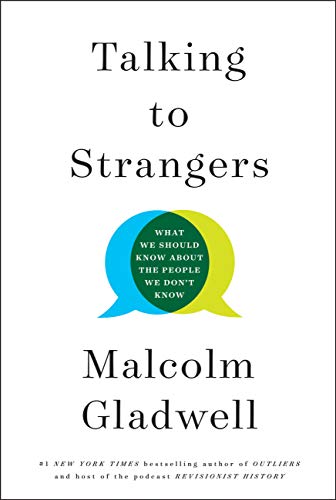
I might as well get the embarrassing part of this review out of the way right off the bat: I used to be pretty obsessed with Malcolm Gladwell. To be fair, the last time I read and enjoyed anything by the wildly successful pop social science writer—who has come under fire for cherry-picking, oversimplifying, and outright misrepresenting actual sociological data—I was also an unironic fan of ballet flats and Aaron Sorkin. I don’t want to be too hard on my teenage self, especially since Gladwell’s charismatic-if-scientifically-questionable writing voice has gained him plenty of fans who are full-grown adults. It’s easy to understand the author’s appeal; his books feel intellectual yet compulsively readable, racing from topic to topic at a breakneck pace without sacrificing clarity. Gladwell manages to bring together cutting-edge social science research, topical news stories, and historical anecdotes in a way that walks the line between erudition and dryness.
Sadly, the actual substance of Gladwell’s arguments is rarely any match for his snappy writing style. “Talking to Strangers,” the author’s most recent book, which was published last month to mixed but generally positive reviews, follows the classic Gladwell formula to an extent, jumping through history to include such diverse figures as Hernán Cortés, Neville Chamberlain, Bernie Madoff, Jerry Sandusky, and Sylvia Plath. Gladwell has questions about each of these figures. What made Chamberlain believe he could avoid war with Nazi Germany by cooperating with Hitler? How did Sandusky get away with sexually abusing young boys under his colleagues’ noses for years? Why did Plath commit suicide? In each case, he claims, the underlying issue is one of communication—or rather, miscommunication. At its core, “Talking to Strangers” is about the ways in which we interpret and translate meaning when speaking to other people, and why we are often so bad at it.
At least, so Gladwell claims. The truth about “Talking to Strangers” is that it’s not really about much of anything. This is where it most obviously differs from the writer’s earlier work, which, while often built on rather shaky evidence, at least used that evidence to make a clear, memorable point. This is another major facet of Gladwell’s widespread appeal: He takes his readers by the hand, walking them carefully through his thought process and towards a memorable, catchy conclusion which he hammers in over and over (and over and over and over) again. This is how so many ideas he writes about, like the tipping point (the critical threshold after which a trend or phenomenon rapidly becomes widespread) or the 10,000-hour rule (that greatness at any activity can be achieved simply by practicing for 10,000 hours), have become a part of the mainstream cultural vocabulary. Never mind that these theories are rife with caveats and based on questionable reasoning—one of the most important pieces of evidence Gladwell uses to support the idea of the tipping point is the apparent link between the adoption of “broken windows” policing tactics in 1990s New York City and the subsequent historic drop in crime rates, a link which has been debunked many times over—they are memorable enough to sell books.
“Talking to Strangers” lacks any such pithy thesis. The best Gladwell can do is inform us that talking to strangers is…hard?
“We will never know the whole truth,” he writes. “We have to be satisfied with something short of that. The right way to talk to strangers is with caution and humility.”
The idea that it’s easy to be misled or misunderstood by those around is hardly a revelation, especially compared to some of the grandiose theories about the human condition the author has put forth in the past.
The relative modesty of Gladwell’s arguments might be justifiable if it was a sign that he was employing greater caution in his sociological analysis, but alas, this could not be further from the truth. “Talking to Strangers” is rife with the same inconsistencies and leaps of logic as his earlier work. The most obvious of these is the failure to adopt a consistent definition of one of the book’s central terms. “Talking to Strangers” is supposed to be about, you know, talking to strangers, but Gladwell never explains what he considers to be a stranger. At different points, the word seems to mean a person you’ve never met, a person you’ve heard of, a person you’re vaguely familiar with, or a person you’re on pretty good terms with, a set of categories that encompasses basically the entire spectrum of acquaintanceship. Then there’s the actual research upon which the book is based, which mostly seems to consist of Gladwell cheerfully picking memorable statistics out of social science journals without checking for evidence or context. One particularly egregious example is his assertion that poets commit suicide at a rate five times higher than that of the general population, a factoid which reviewer Andrew Ferguson traced back to a book that surveyed 36 British and Irish poets born between 1705 and 1805 (a fairly underwhelming sample size) and found two cases of suicide.
This is just one example of Gladwell’s shortcomings. He discusses the death of Sandra Bland without touching on racism and the trial of Brock Turner without touching on rape culture. He moves from story to story without adequately explaining any of them, relying on his storytelling abilities to cover for his lack of intellectual rigor.
In Gladwell’s case, the real problem with talking to strangers is his inability to be quiet and listen.
Tara Joy can be reached at tjoy@wesleyan.edu.


Leave a Reply